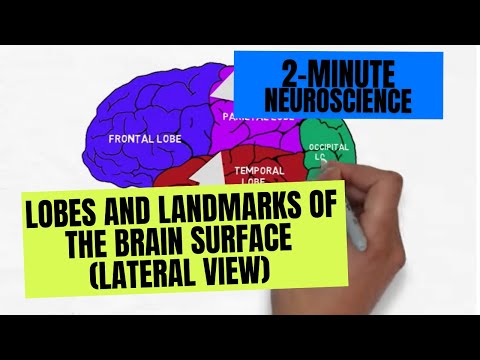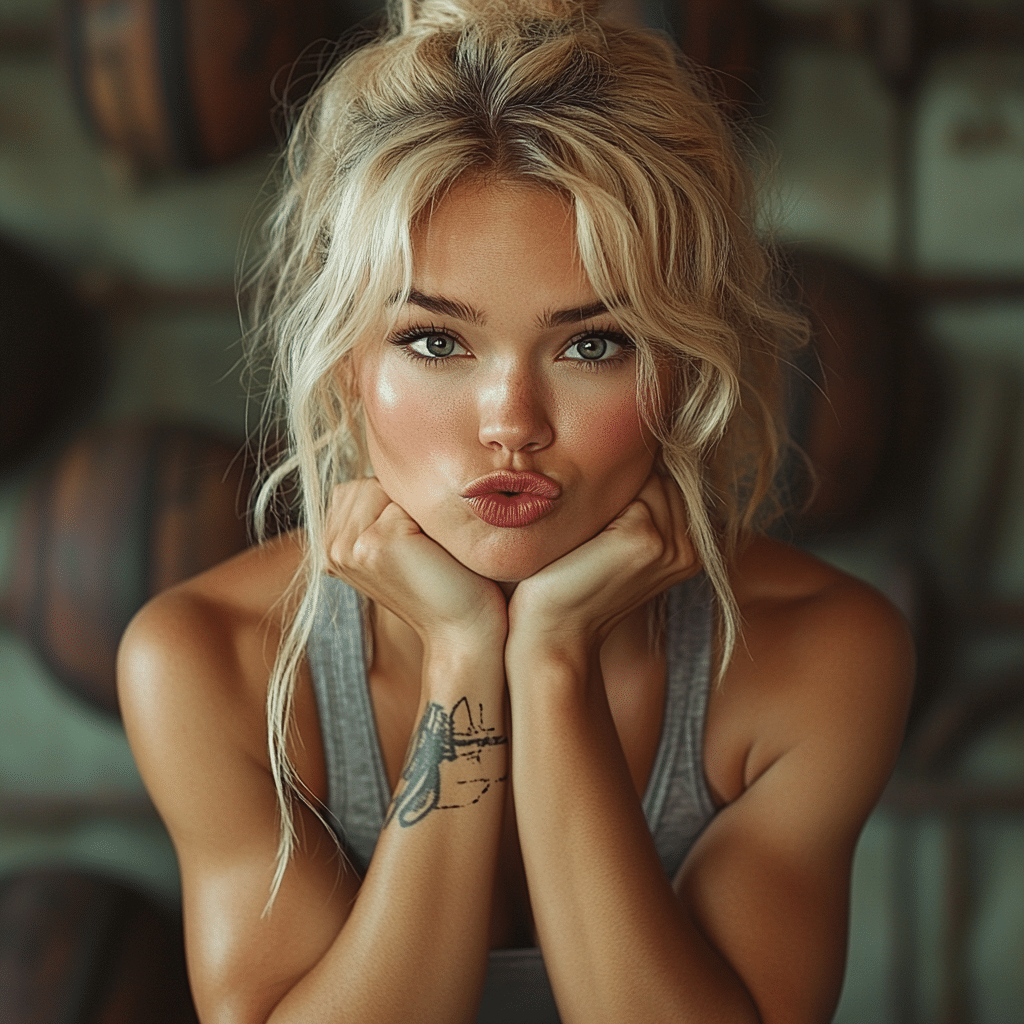The lobes of the brain are crucial to everything we do. Just like you can’t get shredded without understanding how your body moves and reacts, you can’t grasp human cognition without exploring these brain regions. They’re the powerhouses of our daily functions, guiding our thoughts, actions, and emotions. In this article, we’ll dive into the four key lobes of the brain — the frontal, parietal, temporal, and occipital lobes. Each one plays a vital role in shaping our experiences, making them essential to our lives and health. So, let’s flex those knowledge muscles and explore these astonishing functions!

The Four Key Lobes of the Brain and Their Intricate Roles

1. Frontal Lobe: The Executive Control Center
Located at the front of your noggin, the frontal lobe is like the general in a grand battle. It’s all about planning, decision-making, and emotional regulation. Think of it as your personal trainer who keeps you on track with your goals! This is where we identify our “executive functions,” which are essential in everyday life. Injuries here can lead to impulse control issues—just look at the historic case of Phineas Gage, who experienced dramatic personality changes following a severe injury.
To boost the effectiveness of your frontal lobe, consider adding mindfulness and meditation to your fitness routine. Just as Arnold would say, “You need to build the mind just as you build the body.” Research indicates that meditation enhances the frontal lobe’s activity, leading to improved focus and problem-solving skills. So next time you’re lifting weights, think about taking a mental break to sharpen your cognitive edge, too!
2. Parietal Lobe: The Sensory Integration Hub
The parietal lobe is where the magic of the senses happens. This lobe is responsible for processing sensory information, helping you understand your body’s position in space, and coordinating your movements. You know that feeling when you nail a complex workout? That’s your parietal lobe synthesizing touch, temperature, and pain feedback as you navigate through each rep.
Ever wonder why athletes excel in sports like yoga or gymnastics? Well, studies show they possess heightened proprioception — the body’s ability to sense its position. With a well-developed parietal lobe, they can perform precise movements that would baffle the average gym-goer! Incorporate balance-training exercises into your routine. They enhance spatial awareness and coordination, leading to better workouts and ultimately, to achieving that ripped six-pack you’ve always wanted!
3. Temporal Lobe: The Memory and Language Center
Next up is the temporal lobe, nestled neatly at your temples. This lobe plays a pivotal role in auditory processing and memory formation. It’s home to the hippocampus, which is essential for transferring memories from short-term to long-term storage. Timing is everything here, folks! Without a well-functioning temporal lobe, recalling the exact moment you achieved a personal best becomes a daunting task.
For those struggling with memory recall due to conditions like Alzheimer’s disease, it gets tricky. Celebrities like Dr. Oliver Sacks have delved into the relationship between memory and auditory stimuli, demonstrating how we can use music to facilitate recollection. So, next time you’re on the treadmill, let music motivate you to push harder; it may very well aid your memory along the way too.
4. Occipital Lobe: The Visual Processing Center
Finally, we have the occipital lobe, which sits at the back of your brain like a lookout tower. This lobe’s primary focus is visual processing, interpreting everything from colors to motion and helping us make sense of what we see. So if you crush your workout and can see your gains in the mirror, you can thank your occipital lobe!
In fascinating instances like visual agnosia, patients see objects but can’t recognize them. It’s a striking reminder of how intricate and vital this lobe really is. With advancements in neuroimaging tech, doctors can now visualize what goes on in our occipital lobe, leading to enhanced treatments for those with visual impairments. So, be sure to keep your eyes peeled; it’s all about taking in the right cues in the gym and life. Exercise your visual processing by taking in your surroundings; it keeps your mind sharp while you work on that chiseled physique.
![Lobes of the Brain: Cerebrum Anatomy and Function [Cerebral Cortex]](https://www.chiseled-magazine.com/wp-content/cache/flying-press/tZFW-waIpQg-hqdefault.jpg)
The Interconnections of the Lobes: A Holistic View of Brain Functionality
It’s not enough to view each lobe in isolation. The interweaving functions of the lobes of the brain create a beautiful tapestry of cognitive experience. When you dive into a workout, your frontal lobe might plan your routine, while the parietal lobe assesses your movements, and the temporal lobe helps recall the techniques you’ve practiced. These connections are where the magic truly lies!
Research indicates engaging in complex discussions or activities can stimulate communication between these lobes, enhancing cognitive performance. Understanding and improving how we engage our brain can ultimately lead to better fitness outcomes. Just like you wouldn’t train one muscle group all the time, don’t neglect your brain’s holistic development either.

Innovative Perspectives on Brain Optimization
Now that we’ve gained insights into the lobes of the brain, it’s time to optimize your mental performance. Brain trainers like Lumosity bring neuroplasticity principles into the spotlight, offering games that target various brain functions. You wouldn’t just lift weights without a plan—similarly, engage in mental exercises to keep your brain firing!
Also, wellness practices, such as color therapy, can activate different areas of your brain. Consider combining sensory experiences with your exercise routine for a more comprehensive approach. Every workout will feel more rewarding, both physically and mentally.
Ongoing research into neurogenesis, the process of creating new neurons, is promising for brain health. It tells us that it’s never too late to invest in your cognitive capacity. Use that knowledge to engage your brain daily. Curate an enriching environment, both in the gym and your daily activities. Power up your fitness journey by embracing a body-and-brain synergy that gets you that lean, ripped look you’ve always desired.
In conclusion, grasping the unique abilities of each lobe, and recognizing their interplay is essential for maximizing your cognitive resources. Appreciate the brain’s complexity! You’ll not just improve your cognitive health but enhance your overall life experience too. So kickstart your journey toward enlightenment in fitness — and remember, a healthy mind leads to a sculpted body, capable of achieving anything you aspire to do!
![🔥 Lobes of the Brain & Their Functions Explained in 60 SECONDS! [Nursing NCLEX Anatomy]](https://www.chiseled-magazine.com/wp-content/cache/flying-press/0EluRc0xh6E-hqdefault.jpg)
Lobes of the Brain: Mind-Blowing Facts
The Brain’s Frontline: The Frontal Lobe
Ever wondered what goes on in that noggin of yours? The lobes of the brain play a crucial role in shaping who we are and how we interact with the world. Take the frontal lobe, for example, which is responsible for decision-making and impulse control. It’s fascinating how this part of the brain is in charge of our personality traits—almost like a personal trainer guiding our thoughts and actions. Just like finding the best way To cook salmon can make a meal unforgettable, a well-functioning frontal lobe can lead to better choices, steering us clear of those regrettable taco bell power bowl indulgences late at night!
The Sensational Senses: The Parietal Lobe
Next up is the parietal lobe, which helps us process sensory information. Imagine your favorite scene from Squid Game Season 2—the tension, the suspense; it’s all processed here! This lobe interprets our tactile sensations and spatial awareness, contributing to our ability to navigate your surroundings. Without it, we could struggle to find our way home after a long day, much like how someone dealing with Antipsychotics might lose their sense of reality. How wild is that?
The Mystery of Memory: The Temporal Lobe
Now, let’s not forget the temporal lobe, a powerhouse when it comes to memory and language. This is where we store memories that shape our identity, akin to how a fun family dinner often conjures memories of Forrest Wheeler, shared laughter, and heartfelt toasts. Research has shown that even a low-fat diet can help maintain cognitive function, bolstering the capabilities of this important lobe. So, the next time you’re reminiscing about a great meal, remember it’s not just your taste buds at work; it’s your brain pulling up those cherished moments!
The Visionary: The Occipital Lobe
Finally, there’s the occipital lobe, primarily involved in visual processing. It’s like the director of a grand movie, piecing together images and scenes so you can appreciate life in vibrant color. But here’s a fun fact: while this lobe primarily handles vision, other neurons in our brain collaborate, refining our understanding of what we see. Kind of reminds you of how what’s a narcissist can sometimes be hidden in plain sight—difficult to pinpoint until you really look closely. Just as the characters in Walking Dead Governor navigate through murky situations, our vision relies on teamwork, blending data from various sources to see the bigger picture.
The lobes of the brain truly are astonishing in their capabilities, reflecting the incredible complexity of human life, thoughts, and emotions. Isn’t it thrilling to think how each lobe contributes to making us uniquely human?



























